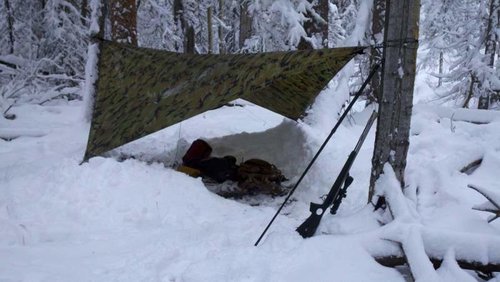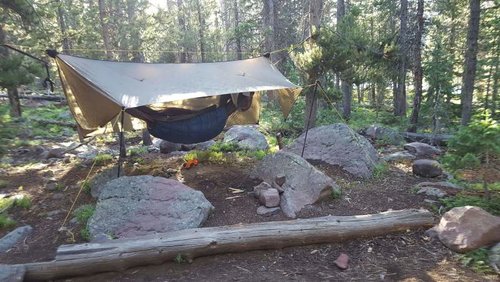Just wondering if anyone else in here camps with a hammock. I've done it a handful of times, mostly during the summer and early fall. A huge positive for me that its nice and compact. My hammock stuffs into a sack that takes up about the same space as a snack size bag of chips (and weighs the same), and your basic 9'x12' blue tarp rolls up into about the size of a loaf of bread and makes a perfect fly/wind block. A couple straps to hang it all and your set.
Anybody else using ultra-light camp set up that's similar?
Anybody else using ultra-light camp set up that's similar?





